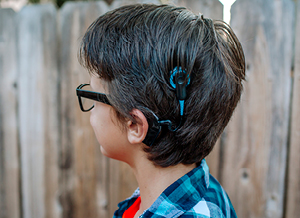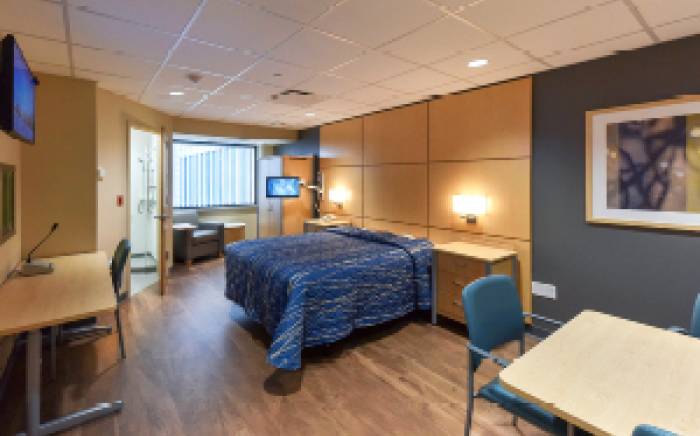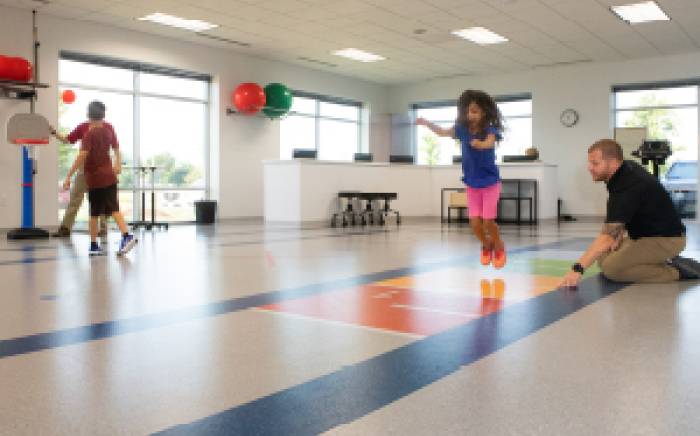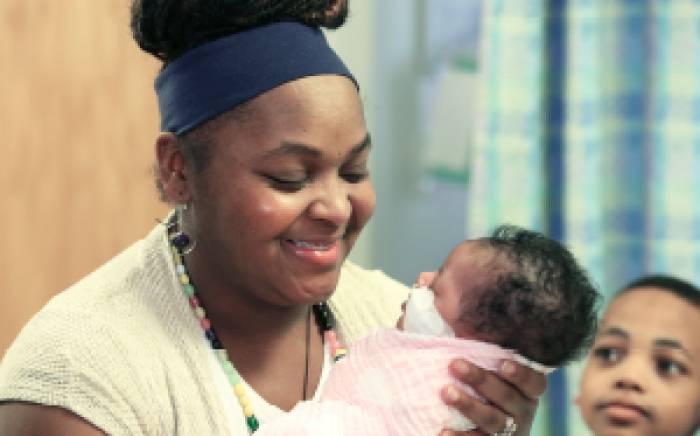 Over the past decade, cochlear implantation for adults with single-sided hearing loss has proven effective in helping to restore sound awareness and localization. Building on that success in the adult patient population, the Washington University department of otolaryngology at St. Louis Children’s Hospital began offering cochlear implants for infants, children and adolescents with unilateral severe to profound sensorineural hearing loss.
Over the past decade, cochlear implantation for adults with single-sided hearing loss has proven effective in helping to restore sound awareness and localization. Building on that success in the adult patient population, the Washington University department of otolaryngology at St. Louis Children’s Hospital began offering cochlear implants for infants, children and adolescents with unilateral severe to profound sensorineural hearing loss.
“Hearing from both ears allows the brain to compare the information it is receiving and determine from where a sound is emanating. Those with unilateral hearing loss are unable to localize sound because the brain has insufficient data,” says Washington University otolaryngologist Craig Buchman, MD. “With only one functioning ear, they need to visually search for the sound source and then connect what they are seeing with what they are hearing to localize a source. Once these children reach school age, research suggests that by the fourth or fifth grade they begin to fall behind their peers.”
Difficulties listening when there is a lot of background noise or when in groups also can cause children to withdraw and become hesitant about contributing to class discussions or social conversations.
Before considering a cochlear implant
Since a cochlear implant involves surgery, a first step for pediatric patients with unilateral hearing loss is determining whether other, noninvasive types of hearing devices may help. A traditional hearing aid sometimes provides patients enough access to sound that they achieve binaural hearing.
“In cases where hearing loss is so significant that a hearing aid simply creates distortion, we have two other options. One is a Contralateral Routing of Signal (CROS) system, through which a microphone placed by the poorer ear wirelessly routes a sound signal to a speaker worn in the hearing ear,” explains Bernadette Rakszawski, AuD, CCC-A, pediatric cochlear implant audiologist. “A second option is a bone conduction hearing system that also positions a microphone at the poorly hearing ear but uses the vibration of sound through the skull bones to activate the hearing ear. The benefit of these devices is that a patient at least has access to sound presented to his or her poorer hearing ear; however, that still doesn’t help localize to where the sound is coming or hear clearly in background noise.”
In the classroom, children can benefit from teachers using an FM/DM system, which requires instructors to wear a microphone that sends the sound of their voice directly to students’ hearing devices.
“Our goal is to fully explore patients’ possible success with other, less invasive options before beginning an evaluation to determine whether a cochlear implant may improve their hearing abilities,” says Dr. Rakszawski.
Evaluating patients for implantation
When these devices prove ineffective, evaluation for a cochlear implant is possible for pediatric patients with a hearing nerve. A full battery of testing is designed to evaluate speech and language skills, vocabulary and articulation. Questionnaires help patients and their families determine how hearing loss has affected them and the deficits they are experiencing. As importantly, counseling emphasizes that having a cochlear implant involves work.
“We work to make sure everyone involved understands that the external speech processor needs to be worn all waking hours, and that daily listening practice at home is necessary in order to gain the benefits we are working toward,” says Andrea Gregg, MS, CCC-SLP, pediatric speech language pathologist. “They need to be willing to work through a hierarchy of skills with me, which includes listening exercises designed to help them learn to discriminate syllables and words containing various vowel and consonant groupings, and eventually recognize open-set sentences. The better patients are able to recognize speech through the cochlear implant alone, the more it will assist them in difficult listening environments such as noisy classrooms or restaurants.”
Patients and their families also learn about the mapping process that helps to maximize the cochlear implant’s effectiveness.
“Mapping is a process of adjusting the electrical stimulation provided to the electrode array, which is implanted in a patient’s cochlea. This helps us determine the levels at which patients can hear soft sounds through the cochlear implant and ensure they are comfortable with a range of soft to loud sounds,” says Dr. Rakszawski, who performs the mapping. “We make sure patients and their families understand that initially mapping is needed frequently, likely every week, and then every three months, six months and eventually at least annually throughout their life.”
The evaluation process also helps parents decide at what point their child should have surgery. “Infants born with single-sided deafness should be scheduled for surgery within their first three years because the brain is able to adapt more quickly,” says Dr. Buchman. “Older children often take longer to adjust to a cochlear implant, but it is a matter of more months, not years.”
Continuing research
Since cochlear implant usage for single-sided deafness in pediatric patients is relatively new, those receiving implants are offered the opportunity to participate in a Washington University Institutional Review Board-approved research component. The goal is to compare patients’ hearing histories, determine which patients benefited from a cochlear implant or another type of device, and in so doing streamline the decision-making process.
For additional information regarding cochlear implants for pediatric patients with single-sided deafness, call Children's Direct at 800.678.HELP (4357).
Related: read more about one mom's quest for her son's cochlear implant.










